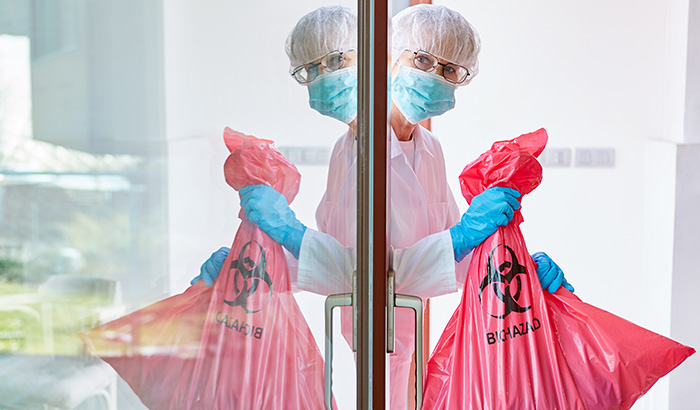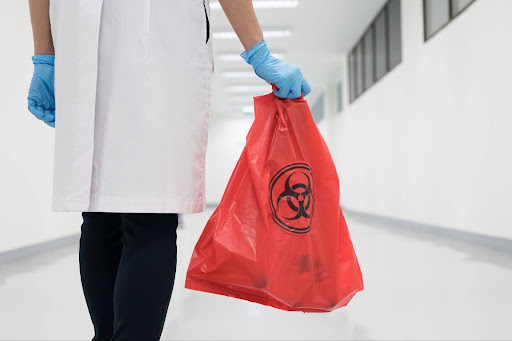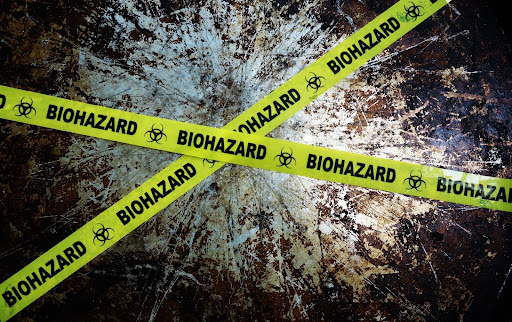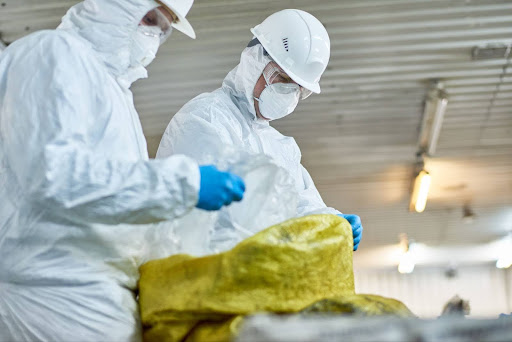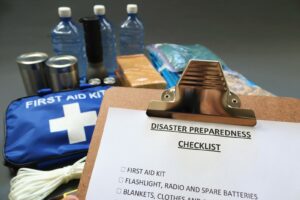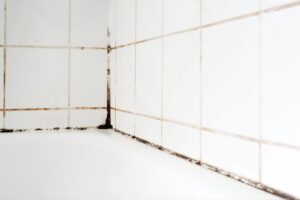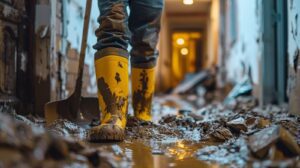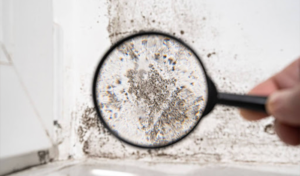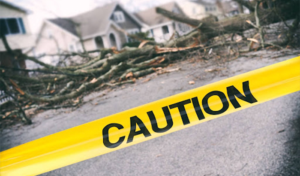Biohazard cleanup, often referred to as hazardous materials (hazmat) cleanup, is the process of safely removing and decontaminating biological and chemical hazards from a specific area. These hazards range from bloodborne pathogens and infectious diseases to chemical spills and more. It’s a specialized field that requires specific training, equipment, and adherence to strict safety protocols.
Why is it crucial to understand biohazard cleanup?
For one, it allows you to recognize potential biohazards and take appropriate precautions. Whether you’re at home, work, or in public spaces, knowing how to identify and handle biohazards can protect you and those around you.
It also empowers professionals and first responders to carry out cleanup operations safely and effectively, preventing the spread of diseases and contamination.
In this blog, we’ll cover everything you need to know about biohazard cleanup. We’ll explore the types of biohazards and the health risks associated with exposure. You’ll learn the necessary precautions, personal protective equipment (PPE), and decontamination procedures to stay safe during cleanup.
We’ll also discuss the importance of following regulations and guidelines set by organizations like OSHA and the EPA.
But that’s not all. We provide a step-by-step guide to the biohazard cleanup process and help you understand when it’s best to seek professional services versus attempting cleanup on your own. Plus, we’ll talk about prevention and preparedness and help you create an emergency plan for biohazard situations.
Types of biohazards
Biohazards encompass a range of potential dangers, each with its unique characteristics and risks. To better grasp the significance of biohazard cleanup, it’s essential to delve into the various types you might encounter, the risks they pose, and real-life examples that underscore their importance.
Bloodborne pathogens
Microorganisms like HIV, hepatitis B, and hepatitis C reside in blood and bodily fluids and transmit through direct contact with infected materials. This makes them a significant concern in healthcare settings, crime scenes, and accidents involving injuries.
Associated risks
Infection: Exposure to bloodborne pathogens can result in severe and potentially life-threatening infections.
Chronic Diseases: Some bloodborne pathogens can lead to chronic and debilitating diseases.
Occupational Hazards: Healthcare professionals and first responders face heightened risks due to their regular exposure to these pathogens.
Real-life example
Healthcare workers who routinely handle blood samples or provide care to patients infected with bloodborne diseases must take stringent precautions, including using personal protective equipment (PPE), to prevent transmission.
Chemical spills
Chemical spills happen in various environments, from laboratories to industrial sites and transportation accidents. These incidents release hazardous chemicals into the surroundings, posing immediate dangers to anyone in the vicinity.
Associated risks
Toxic Exposure: Inhalation or skin contact with hazardous chemicals can lead to poisoning and adverse health effects.
Respiratory Issues: Inhaling chemical fumes can result in respiratory distress and complications.
Environmental Impact: Chemical spills can contaminate the environment, affecting soil, water, and air quality and potentially harming ecosystems.
Real-life example
An overturned truck carrying toxic chemicals on a highway leads to a hazardous spill. Nearby residents and emergency responders must evacuate the area promptly to avoid exposure to the toxic fumes.
Infectious diseases
Infectious diseases are caused by pathogenic microorganisms, including bacteria, viruses, and fungi. These diseases spread through direct or indirect contact, which makes them a global health concern.
Associated risks
Transmission: Infectious diseases are transmitted from person to person through various routes, including airborne transmission.
Pandemics: Some infectious diseases can escalate into global outbreaks with severe consequences for public health.
Healthcare-Associated Infections: Healthcare facilities are at risk of disease transmission if proper infection control measures are not in place.
Real-life example
The COVID-19 pandemic serves as a recent and ongoing illustration of the rapid transmission of an infectious disease. It underscores the importance of stringent preventive measures and adherence to biohazard cleanup protocols.
Health risks and dangers
Biohazard exposure encompasses a spectrum of risks, with the nature of the biohazard itself playing a pivotal role. Here’s a nuanced look at the potential health risks:
Infectious diseases
Bloodborne pathogens like HIV, hepatitis B, and hepatitis C lurk in blood and bodily fluids, posing a significant risk. Direct contact with infected materials can result in the transmission of these highly concerning infections.
Chemical hazards
Biohazards extend to chemical spills and hazardous materials, which can lead to acute poisoning, respiratory distress, and long-term health complications. It’s imperative to grasp the gravity of such encounters.
Airborne contaminants
In certain scenarios, biohazards can become airborne, ushering in the potential for respiratory infections and ailments. This underscores the importance of recognizing the diverse forms biohazards can take.
Vulnerable populations
Certain segments of society are more vulnerable to the perils of biohazard exposure.
Healthcare workers
Those operating in the healthcare arena frequently encounter biohazards in their line of duty. Consequently, they must rigorously adhere to safety protocols to safeguard their well-being.
First responders
The courageous individuals who serve as police, firefighters, and emergency medical personnel are often the initial responders to accidents and emergencies. Consequently, they are at heightened risk and must exercise utmost caution.
Children and the elderly
Vulnerable demographics, including children and the elderly, may grapple with more severe consequences following biohazard exposure. Their less robust immune systems render them particularly susceptible.
Necessary precautions
When it comes to handling biohazards, safeguarding your well-being is paramount. Let’s delve into the essential precautions you should take.
Personal protective equipment (PPE)
Think of PPE as your shield against biohazards. It includes gloves, masks, respirators, goggles, and full bodysuits. Always wear the appropriate PPE for the situation to shield yourself from direct contact with biohazardous materials.
Proper handling and disposal
Handling biohazards demands care and precision. Use sealed containers to prevent leaks when picking up and transporting potentially biohazardous materials. Follow local regulations for biohazardous waste disposal diligently.
Decontamination procedures
Decontamination is crucial to neutralize any lingering hazards. Thoroughly clean and disinfect contaminated surfaces using the right cleaning agents. Ensure that equipment and tools used during cleanup are also decontaminated. After handling biohazards, follow strict personal decontamination procedures to prevent the spread of contaminants.
Regulations and guidelines
Familiarize yourself with regulations and guidelines provided by organizations like OSHA and the EPA. These standards are in place to ensure safe and compliant biohazard cleanup. Adhering to these guidelines is not just a good practice; it’s the law.
Remember, safety should always come first when dealing with biohazards. By following these precautions, you protect yourself and contribute to a safer environment for everyone involved.
Biohazard cleanup process
When faced with a biohazard situation, it’s essential to thoroughly understand the cleanup process. Let’s walk through the steps, underline the significance of professional biohazard cleanup services, and consider the factors when deciding between a DIY approach and seeking professional help.
Step 1: Initial assessment
The journey begins with assessing the extent of the biohazard contamination. You need to identify the type of biohazard involved and gauge the size of the affected area accurately.
Step 2: Safety above all
Before taking any action, prioritize safety. Equip yourself with the appropriate personal protective equipment (PPE) and ensure that no one without proper protection enters the contaminated zone.
Step 3: Containment measures
Effectively contain the affected area to prevent any further spread of the biohazardous materials. Employ barriers and caution tape where necessary to isolate the zone.
Step 4: The cleanup phase
Now, it’s time to remove and dispose of all contaminated materials following strict protocols. This may involve discarding affected objects, materials, or even sections of a structure.
Step 5: Decontamination protocols
Thoroughly clean and disinfect every surface, tool, and piece of equipment used during the cleanup process. The goal is to eliminate every trace of contamination.
Step 6: Waste disposal
Biohazardous waste must be disposed of following local regulations. This typically entails using sealed containers and relying on licensed waste disposal services.
Step 7: Final verification
Before declaring the area safe for reentry, perform a comprehensive check to ensure no biohazard risks linger.
Why opt for professional biohazard cleanup services
Seeking professional biohazard cleanup services is imperative. First and foremost, you gain the advantage of the expertise that these professionals bring to the table. With their training and hands-on experience, you can trust in a thorough and secure biohazard cleanup process.
These experts are well-versed in local laws and regulations, ensuring you steer clear of potential legal complications. Safety remains a paramount concern, and professionals are not only equipped with the necessary gear but also possess the knowledge to safeguard themselves and others involved in the cleanup.
Opting for professional assistance provides an invaluable sense of peace of mind, offering the assurance that the contaminated area will undergo a meticulous decontamination process, rendering it safe and hazard-free for subsequent use.
Trust Total Flood & Fire for biohazard cleanup
When faced with the daunting task of biohazard cleanup, it’s paramount to rely on experienced professionals who can ensure the thorough and safe remediation of contaminated areas. Total Flood & Fire Restoration stands as a trusted partner in biohazard cleanup, armed with the expertise, equipment, and adherence to regulations necessary for effective cleanup and decontamination.
Don’t hesitate to contact Total Flood & Fire for the comprehensive and professional services you need to restore safety and peace of mind.

